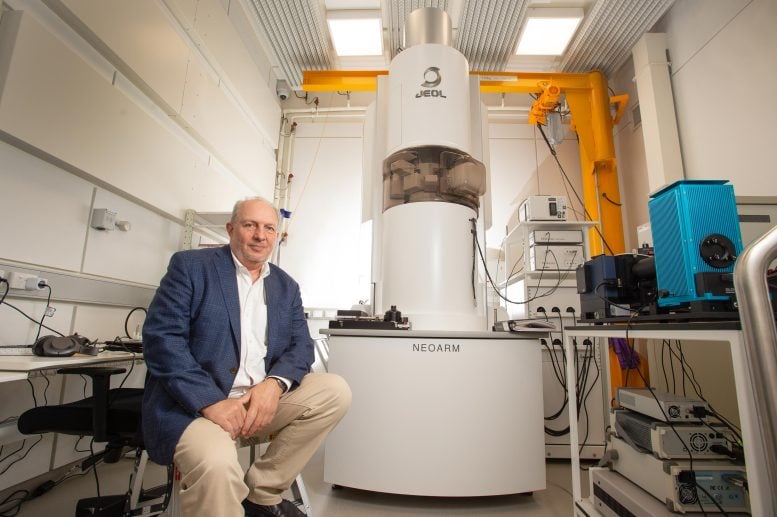“Fundamental Discovery” Used To Turn Nanotube Into Tiny Transistor – 25,000x

A designer view of a single-wall carbon nanotube intramolecular junction with metallic portions on left and right ends and a semiconductor ultrashort ~3,0nm channel in between. Credit: National University of Science and Technology, Moscow
An international team of researchers has used a unique tool inserted into an electron microscope to create a transistor that’s 25,000 times smaller than the width of a human hair.
The research, published in the journal Science, involves researchers from Japan, China, Russia, and Australia who have worked on the project that began five years ago.
QUT Center for Materials Science co-director Professor Dmitri Golberg, who led the research project, said the result was a “very interesting fundamental discovery” which could lead a way for the future development of tiny transistors for future generations of advanced computing devices.

Professor Dmitri Golberg led a team that used a unique tool inserted into an electron microscope to create a transistor that’s 25,000 smaller than the width of a human hair. Credit: QUT
“In this work, we have shown it is possible to control the electronic properties of an individual carbon nanotube,” Professor Golberg said.
The researchers created the tiny transistor by simultaneously applying a force and low voltage which heated a carbon nanotube made up of a few layers until outer tube shells separate, leaving just a single-layer nanotube.
The heat and strain then changed the “chilarity” of the nanotube, meaning the pattern in which the carbon atoms joined together to form the single-atomic layer of the nanotube wall was rearranged.
The result of the new structure connecting the carbon atoms was that the nanotube was transformed into a transistor.
Professor Golberg’s team members from the National University of Science and Technology in Moscow created a theory explaining the changes in the atomic structure and properties observed in the transistor.
Lead author Dr. Dai-Ming Tang, from the International Center for Materials Nanoarchitectonics in Japan, said the research had demonstrated the ability to manipulate the molecular properties of the nanotube to fabricate nanoscale electrical devices.
Dr. Tang began working on the project five years ago when Professor Golberg headed up the research group at this center.
“Semiconducting carbon nanotubes are promising for fabricating energy-efficient nanotransistors to build beyond-silicon microprocessors,” Dr. Tang said.
“However, it remains a great challenge to control the chirality of individual carbon nanotubes, which uniquely determines the atomic geometry and electronic structure.
“In this work, we designed and fabricated carbon nanotube intramolecular transistors by altering the local chirality of a metallic nanotube segment by heating and mechanical strain.”
Professor Golberg said the research in demonstrating the fundamental science in creating the tiny transistor was a promising step towards building beyond-silicon microprocessors.
Transistors, which are used to switch and amplify electronic signals, are often called the “building blocks” of all electronic devices, including computers. For…
Read More: “Fundamental Discovery” Used To Turn Nanotube Into Tiny Transistor – 25,000x
